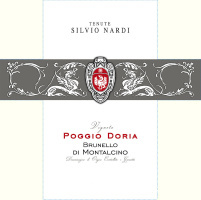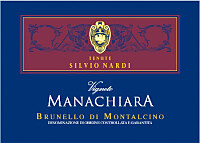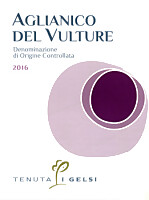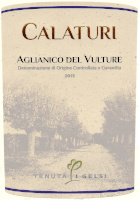
Wine Culture and Information since 2002 - Volume 22
 Wine Culture and Information since 2002 - Volume 22 |
|
Contrasts of Grüner Veltliner and TimorassoThe most widespread white grape variety in Austria compared to the noble and rare variety of Colli Tortonesi in Piedmont |
|
So many times, in these pages, we have highlighted the enormous wealth of wine grape varieties present in Italy, a heritage that – without fear of denial – has no equal in any other country in the world. They are not the only grapes used for the production of wine, of course, and also in Italy the varieties originating from other countries is quite numerous. There are, in fact, many grapes used for the production of wine and which originated outside Italy – European countries, in particular – and which are undoubtedly the absolute protagonists of the world wine scene. When one thinks about the so-called “international” – or allochthonous grapes – France is certainly the country that counts the greatest number of varieties and it is clearly the first country most would mention in this sense. Few, probably, think about Austria, however one of the two grapes of the tasting by contrast of this month – Grüner Veltliner – has its origin from this country. This interesting white grape variety does not enjoy the fame of other and more famous allochthonous grapes, however it has been successful in some countries, particularly in Europe, giving proof of considerable enological interest. From the huge viticultural heritage of Italy, this month we have chosen a variety not very common outside its original territory, but with proven enological quality. Timorasso – this is the variety we will compare with Grüner Veltliner – finds its maximum expression in the territory of Colline Tortonesi, in the province of Alessandria, Piedmont. A variety recently rediscovered thanks to the initiative and the will of some producers, it is in fact evident Timorasso, outside its territory of origin, produces very different results although of good quality. Two varieties – Grüner Veltliner and Timorasso – very different one from each other, therefore perfect for a comparison by contrast, with substantial differences that will be evident at every stage of sensorial evaluation.
|
|
Grüner Veltliner is undeniably the main enological glory of Austria and it is the most cultivated variety in this country. A controversial grape in some respects, this variety is in fact capable of making both ordinary wines and extraordinary bottles, Grüner Veltliner had a moderate success and spreading even outside the borders of Austria. This variety is in fact cultivated in several countries of Europe – including Italy, the Czech Republic, Slovakia, Hungary and Germany – also being successful in countries as far away as Australia and the United States of America. Grüner Veltliner is a grape having decidedly ancient origins and lost in remote times of civilization. A mystery that does not seem to be solved yet, including the determination of its place of origin and which, in any case, is believed to be Austria. To make things even more complicated, to the enigma of the origin of this variety is also added the name – Grüner Veltliner – as its literal meaning is “Green from Valtellina”. This name, in fact, could suggest an Italian origin and specifically to Valtellina, near the Alps, in the province of Sondrio. Research conducted on the genetic profile of Grüner Veltliner, however, excluded any link with Italy and Italian grapes, establishing that – in fact – this Austrian variety originated from a spontaneous cross. It has been found out Grüner Veltliner is a cross between Savagnin and St. Georgener-Rebe, an almost extinct Austrian variety originating from Sankt Georgen am Leithagebirgem in the Burgenland region. The modern success of Grüner Veltliner is undeniably due to the famous and celebrated Austrian vitner Lenz Moser, who, thanks to a particular breeding system – hochkultur, literally “high cultivation” – has managed to enhance this variety in order to make wines of enormous and proven value. The best wines from Grüner Veltliner stand out for their good structure and a spicy olfactory character in which can be recognized white pepper. However, it is a variety difficult to cultivate and to make wine from, because – lacking true quality production criteria – it gives rather ordinary, anonymous and non very expressive wines.
|
||||
|
Timorasso owes its recent fame and success both to the initiative and will of some producers and to Colli Tortonesi, its territory of origin. A variety of ancient origins, before the advent of phylloxera and the consequent devastation, Timorasso was widespread in the territories of southern Piedmont as well as in the neighboring Lombardy and Liguria. Before the arrival of phylloxera, Timorasso was in fact one of the most cultivated and widespread varieties of these territories, a supremacy it then lost, as a result of these ominous facts, in favor of Cortese grape. The historical mentions related to Timorasso are many and, curiously, in the past it was mainly praised as a “table grape”, that is a grape intended for the consumption as fruit. After a long period of disinterest, also due to the lower presence in the vineyards of these territories, in the 1980s Timorasso got a new and strong interest. It was in fact thanks to the initiative and will of some producers in the province of Alessandria, who committed to the cultivation and quality vinification of Timorasso and made it achieve results of undeniable enological value. Timorasso seems to have found its best territory in the Colline Tortonesi, in province of Alessandria, Piedmont, today recognized as a Denominazione d'Origine Controllata (Denomination of Controlled Origin). It is in fact a rather demanding variety that scarcely adapts to climatic and environmental conditions different from those of its territory of origin, a characteristic making it – today – a rare and refined grapes with a consequent low production of wines. In the Colline Tortonesi, Timorasso gives its best in the production of the three valleys of this area: Val Grue, Val Curone and Valle Ossona. In addition to the province of Alessandria, Timorasso is also found, and allowed for the production of wine, in the provinces of Asti and Cuneo. This rare white grape, over the years, has proven to make excellent wines and with a pretty good enological versatility, including the production of sparkling wines. Timorasso has also proven to make wines with excellent longevity potentials and aging in bottle, not least, it has also given good results when vinified in wood.
|
It is now the time to choose the wines of the tasting by contrast of this month. Grüner Veltliner, as we have already said, is cultivated in various wine making countries of the world – including Italy, Alto Adige in particular – however the best bottles of this wine are produced in Austria. Our choice, regarding this variety, is in favor of the interesting Austrian production, particularly that of the Wachau area, in the eastern part of Austria. As for Timorasso, our choice is clearly in favor of the interesting production belonging to the Denominazione d'Origine Controllata Colline Tortonesi, in the province of Alessandria, Piedmont. In both cases, we will pay attention to both the composition of the wine and the aging, making sure they are produced with the respective varieties alone and vinified in inert containers, preferably in steel tanks. The wines belong to the most recent harvest, served in tasting glasses at a temperature of 10 °C. (50 °F) Let's pour Grüner Veltliner and Timorasso into their respective glasses and begin the tasting by contrast of this month, taking into consideration the appearance of both wines. The first wine we evaluate is Grüner Veltliner. By tilting the glass over a white surface – for example a sheet of paper – and by observing the base of the glass, where the mass of the wine is thicker, let's evaluate color and transparency. We can see a brilliant greenish yellow color and a high transparency, allowing the perfect vision of the object eventually placed between the glass and the white surface. Let's now look at the edge of the wine, towards the opening of the glass, in order to evaluate its nuance: also in this case we notice an evident greenish yellow color. Let's move on to the evaluation of the appearance of Colline Tortoresi Timorasso and observe the wine at the base of the glass. The Piedmontese wine shows an intense straw yellow color, often tending to golden. Let's now look at the opening of the glass: the nuance of Timorasso confirms the straw yellow hue. Grüner Veltliner and Timorasso make wines with distinctly different olfactory profiles, in both cases very interesting. In wines produced with the Austrian variety are often recognized spicy aromas recalling the pleasant scent of white pepper, however sensations reminiscent of fruit and flowers are also rich: in wines produced with Grüner Veltliner can be perceived aromas recalling citrus fruits, in particular grapefruit, as well as peach, apple, pear and plum. As for the sensations recalling flowers, wines produced with this Austrian variety are characterized by acacia aromas. Moreover, sometimes can also be perceived aromatic herbs. The olfactory profile of Timorasso is very different, in which are perceived aromas of white pulp fruits – apple and pear, in particular – in addition to floral sensations of acacia, hawthorn and broom. A characteristic often found in Timorasso wines is a marked sensation of minerality and, with time and aging, it is possible to perceive aromas of honey and even hydrocarbons. Let's continue our tasting by contrast and move on to the evaluation of the olfactory profiles of the wines of this month, starting from the Grüner Veltliner. By keeping the glass in vertical position and, without swirling, let's proceed with the first smell in order to evaluate the opening, that is the first aromas emerging from the glass and distinguishing the wine. On the nose are perceived intense and refined aromas of grapefruit, pear and apple, as well as a pleasant aroma in which can be recognized acacia. After having swirled the glass, let's proceed with the second smell in order to complete the evaluation of the olfactory profile of Grüner Veltliner. The Austrian wine is completed with pleasant sensations of peach and the unmistakable aroma of white pepper that is often combined with dill and pineapple sensations. Let's now pass to the evaluation of the aromas of Colline Tortonesi Timorasso, keeping the glass in vertical position in order to examine the opening of this wine. To the nose are perceived intense and clean aromas of apple, pear and plum, followed by sensations reminiscent of hawthorn and acacia. After having swirled the glass, the profile of Timorasso is completed with peach, medlar, citronella and broom, as well as floral perceptions recalling rose and the characteristic minerality that can sometimes recall flint stone. The differences between Grüner Veltliner and Timorasso are clearly evident also in the gustatory evaluation of the two wines. Let's take a sip of the Austrian wine and evaluate its attack, that is the first gustatory sensations perceived in the mouth. Grüner Veltliner is characterized by a good acidity and a structure which can be defined average, the pseudo-burning sensation of alcohol is modest and balanced by acidity. In the mouth we perceive the flavors of grapefruit, apple, pear and peach, confirming the good correspondence to the nose. Let's now pass to the evaluation of the opening of Colline Tortonesi Timorasso and take a sip of this wine. It is perceived, just like the previous wine, the pleasant crispness given by the acidity and a good structure, the pseudo-burning sensation of the alcohol is balanced, having, also in this case, good elegance and finesse. In the mouth can be perceived flavors of apple, pear, medlar and plum, confirming the good correspondence to the nose. Let's move on to the last phase of the tasting by contrast of this month, that is to the evaluation of the final sensations the wines leave in the mouth after swallowing. The first wine of which we evaluate the finish is, just like in the previous phases, Grüner Veltliner. The persistence of the Austrian wine – one of the primary factors determining quality – is very long and lasts for several seconds, during which it is possible to perceive the flavors of grapefruit, apple, pear and peach, well supported by a good and pleasant acidity. The finish of Colline Tortonesi Timorasso is obviously not inferior and, also in this case, persistence is definitely good, clearly perceptible for several seconds, in the mouth can be perceived flavors of apple, pear, medlar and plum, sometimes followed by a sensation reminiscent of almond. Let's evaluate again the gustatory profiles of the two wines, by first taking a sip of Grüner Veltliner and then Timorasso: the differences in the mouth, especially in the perceived flavors, are evident.
|
||||||||
Wines of the Month |
|
|
|
Score legend Prices are to be considered as indicative. Prices may vary according to the country or the shop where wines are bought |

|
|
Brunello di Montalcino Vigneto Poggio Doria 2012 |
|
| Tenute Silvio Nardi (Tuscany, Italy) | |
 Sangiovese Sangiovese | |
| Price: € 90.00 | Score: |
 Intense ruby red and nuances of garnet red, little transparency. Intense ruby red and nuances of garnet red, little transparency. Intense, clean, pleasing, refined and elegant, starts with hints of
black cherry, plum and dried violet followed by aromas of raspberry, dried
rose, blueberry, chocolate, clove, pink pepper, mace, tobacco, licorice,
graphite, vanilla and menthol. Intense, clean, pleasing, refined and elegant, starts with hints of
black cherry, plum and dried violet followed by aromas of raspberry, dried
rose, blueberry, chocolate, clove, pink pepper, mace, tobacco, licorice,
graphite, vanilla and menthol.
 Tannic attack and however balanced by alcohol, full body, intense
flavors, pleasing roundness. Tannic attack and however balanced by alcohol, full body, intense
flavors, pleasing roundness.
 Very persistent finish with long flavors of black cherry, plum and
raspberry. Very persistent finish with long flavors of black cherry, plum and
raspberry.
 30 months in cask, at least 36 months in bottle. 30 months in cask, at least 36 months in bottle. |
|
 Game, Roasted meat, Stewed and braised meat, Hard cheese Game, Roasted meat, Stewed and braised meat, Hard cheese |
|

|
|
Brunello di Montalcino Vigneto Manachiara 2012 |
|
| Tenute Silvio Nardi (Tuscany, Italy) | |
 Sangiovese Sangiovese | |
| Price: € 90.00 | Score: |
 Brilliant ruby red and nuances of garnet red, moderate transparency. Brilliant ruby red and nuances of garnet red, moderate transparency. Intense, clean, pleasing, refined and elegant, starts with hints of
black cherry, plum and dried violet followed by aromas of raspberry,
blueberry, dried rose, chocolate, cinnamon, coffee, tobacco, mace,
licorice, leather, vanilla and menthol. Intense, clean, pleasing, refined and elegant, starts with hints of
black cherry, plum and dried violet followed by aromas of raspberry,
blueberry, dried rose, chocolate, cinnamon, coffee, tobacco, mace,
licorice, leather, vanilla and menthol.
 Tannic attack and however balanced by alcohol, full body, intense
flavors, pleasing crispness. Tannic attack and however balanced by alcohol, full body, intense
flavors, pleasing crispness.
 Very persistent finish with long flavors of black cherry, plum and
raspberry. Very persistent finish with long flavors of black cherry, plum and
raspberry.
 18 months in barrique, 12 months in cask, 2 years in bottle. 18 months in barrique, 12 months in cask, 2 years in bottle. |
|
 Game, Stewed and braised meat, Roasted meat, Hard cheese Game, Stewed and braised meat, Roasted meat, Hard cheese |
|

|
|
Aglianico del Vulture 2016 |
|
| Tenuta I Gelsi (Basilicata, Italy) | |
 Aglianico Aglianico | |
| Price: € 8.00 | Score: |
 Intense ruby red and nuances of garnet red, little transparency. Intense ruby red and nuances of garnet red, little transparency. Intense, clean, pleasing and refined, starts with hints of black
cherry, plum and blackberry followed by aromas of violet, blueberry,
raspberry, pomegranate, carob and tobacco. Intense, clean, pleasing and refined, starts with hints of black
cherry, plum and blackberry followed by aromas of violet, blueberry,
raspberry, pomegranate, carob and tobacco.
 Properly tannic attack and however balanced by alcohol, good body,
intense flavors, pleasing crispness. Properly tannic attack and however balanced by alcohol, good body,
intense flavors, pleasing crispness.
 Persistent finish with flavors of black cherry, plum and blackberry. Persistent finish with flavors of black cherry, plum and blackberry. Aged in steel tanks. Aged in steel tanks. |
|
 Broiled meat and barbecue, Roasted meat, Stewed meat with mushrooms, Cheese Broiled meat and barbecue, Roasted meat, Stewed meat with mushrooms, Cheese |
|

|
|
Aglianico del Vulture Superiore Calaturi 2013 |
|
| Tenuta I Gelsi (Basilicata, Italy) | |
 Aglianico Aglianico | |
| Price: € 16.50 | Score: |
 Intense ruby red and nuances of garnet red, little transparency. Intense ruby red and nuances of garnet red, little transparency. Intense, clean, pleasing, refined and elegant, starts with hints of
black cherry, plum and blackberry followed by aromas of violet, blueberry,
chocolate, tobacco, licorice, mace, vanilla and menthol. Intense, clean, pleasing, refined and elegant, starts with hints of
black cherry, plum and blackberry followed by aromas of violet, blueberry,
chocolate, tobacco, licorice, mace, vanilla and menthol.
 Properly tannic attack and however balanced by alcohol, good body,
intense flavors, agreeable. Properly tannic attack and however balanced by alcohol, good body,
intense flavors, agreeable.
 Persistent finish with flavors of plum, black cherry and blackberry. Persistent finish with flavors of plum, black cherry and blackberry. 24 months in cask, 24 months in bottle. 24 months in cask, 24 months in bottle. |
|
 Broiled meat and barbecue, Roasted meat, Stewed meat with mushrooms, Cheese Broiled meat and barbecue, Roasted meat, Stewed meat with mushrooms, Cheese |
|

|
|
Vermentino di Gallura Superiore Beru 2015 |
|
| Siddura (Sardinia, Italy) | |
 Vermentino Vermentino | |
| Price: € 30.50 | Score: |
 Intense golden yellow and nuances of golden yellow, very transparent. Intense golden yellow and nuances of golden yellow, very transparent. Intense, clean, pleasing, refined and elegant, starts with hints of
plum, apple and honey followed by aromas of grapefruit, bread crust,
butter, hawthorn, thyme, flint, croissant, almond and vanilla. Intense, clean, pleasing, refined and elegant, starts with hints of
plum, apple and honey followed by aromas of grapefruit, bread crust,
butter, hawthorn, thyme, flint, croissant, almond and vanilla.
 Crisp attack and however balanced by alcohol, full body, intense
flavors, pleasing roundness. Crisp attack and however balanced by alcohol, full body, intense
flavors, pleasing roundness.
 Persistent finish with flavors of plum, grapefruit and honey. Persistent finish with flavors of plum, grapefruit and honey. 8 months in barrique. 8 months in barrique. |
|
 Stuffed pasta, Roasted white meat, Roasted fish, Broiled fish, Cheese Stuffed pasta, Roasted white meat, Roasted fish, Broiled fish, Cheese |
|

|
|
Moscato di Sardegna Passito Nuali 2015 |
|
| Siddura (Sardinia, Italy) | |
 Moscato Bianco Moscato Bianco | |
| Price: € 20.50 - 375ml | Score: |
 Brilliant amber yellow and nuances of amber yellow, transparent. Brilliant amber yellow and nuances of amber yellow, transparent. Intense, clean, pleasing, refined and elegant, starts with hints of
raisin, dried apricot and peach jam followed by aromas of quince jam,
candied fruits, lychee, honey, citrus fruit peel, dried fig, dried rose,
date, thyme and nail polish. Intense, clean, pleasing, refined and elegant, starts with hints of
raisin, dried apricot and peach jam followed by aromas of quince jam,
candied fruits, lychee, honey, citrus fruit peel, dried fig, dried rose,
date, thyme and nail polish.
 Sweet and round attack, however balanced by alcohol, good body, intense
flavors, pleasing crispness. Sweet and round attack, however balanced by alcohol, good body, intense
flavors, pleasing crispness.
 Persistent finish with flavors of raisin, dried apricot and lychee. Persistent finish with flavors of raisin, dried apricot and lychee. Aged in steel tanks. Aged in steel tanks. |
|
 Dried fruit and jam tarts, Confectionery, Piquant cheese Dried fruit and jam tarts, Confectionery, Piquant cheese |
|

|
|
Barolo Castelletto 2014 |
|
| Manzone Giovanni (Piedmont, Italy) | |
 Nebbiolo Nebbiolo | |
| Price: € 40.00 | Score: |
 Brilliant ruby red and nuances of garnet red, moderate transparency. Brilliant ruby red and nuances of garnet red, moderate transparency. Intense, clean, pleasing, refined and elegant, starts with hints of
cherry, plum and violet followed by aromas of raspberry, rose, cinnamon,
pink pepper, tobacco, chocolate, licorice, leather, vanilla and menthol. Intense, clean, pleasing, refined and elegant, starts with hints of
cherry, plum and violet followed by aromas of raspberry, rose, cinnamon,
pink pepper, tobacco, chocolate, licorice, leather, vanilla and menthol.
 Tannic attack and however balanced by alcohol, full body, intense
flavors, pleasing crispness. Tannic attack and however balanced by alcohol, full body, intense
flavors, pleasing crispness.
 Persistent finish with flavors of cherry, plum and raspberry. Persistent finish with flavors of cherry, plum and raspberry. 30 months in cask. 30 months in cask. |
|
 Game, Roasted meat, Stewed and braised meat, Hard cheese Game, Roasted meat, Stewed and braised meat, Hard cheese |
|

|
|
Barolo Bricat 2014 |
|
| Manzone Giovanni (Piedmont, Italy) | |
 Nebbiolo Nebbiolo | |
| Price: € 40.00 | Score: |
 Brilliant ruby red and nuances of garnet red, moderate transparency. Brilliant ruby red and nuances of garnet red, moderate transparency. Intense, clean, pleasing, refined and elegant, starts with hints of
cherry, plum and violet followed by aromas of raspberry, rose, blueberry,
rhubarb, blackberry, chocolate, cinnamon, tobacco, mace, menthol and
vanilla. Intense, clean, pleasing, refined and elegant, starts with hints of
cherry, plum and violet followed by aromas of raspberry, rose, blueberry,
rhubarb, blackberry, chocolate, cinnamon, tobacco, mace, menthol and
vanilla.
 Tannic attack and however balanced by alcohol, full body, intense
flavors, pleasing crispness. Tannic attack and however balanced by alcohol, full body, intense
flavors, pleasing crispness.
 Persistent finish with flavors of cherry, plum and raspberry. Persistent finish with flavors of cherry, plum and raspberry. 30 months in cask. 30 months in cask. |
|
 Game, Roasted meat, Stewed and braised meat, Hard cheese Game, Roasted meat, Stewed and braised meat, Hard cheese |
|
|
||||||||
|
DiWineTaste Polls
|
| |||||||
Privacy Policy | |||||||


| Copyright © 2002-2024 Antonello Biancalana, DiWineTaste - All rights reserved |
| All rights reserved under international copyright conventions. No part of this publication and of this WEB site may be
reproduced or utilized in any form or by any means, electronic or mechanical, without permission in writing from DiWineTaste. |